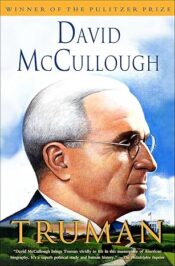
Federalist No. 82
Reading Federalist 82 and the other Papers (78, 79, 80, 81, 83) devoted to the organization and workings of the judiciary system, we are reminded that the system did not just arrive fully formed like Botticelli’s Venus on the half shell. It was the object of debates just as contentious as those that take place today. We are privileged to view the debates in the light of over 200 years of judicial history and apply the wisdom of hind sight to the premises and conclusions set forth by the antagonists. We can also consider whether their reasoning was flawed or whether their expectations exceeded the capabilities of the generations who followed.
To the People of the State of New York:
THE erection of a new government, whatever care or wisdom may distinguish the work, cannot fail to originate questions of intricacy and nicety; and these may, in a particular manner, be expected to flow from the establishment of a constitution founded upon the total or partial incorporation of a number of distinct sovereignties. ‘Tis time only that can mature and perfect so compound a system, can liquidate the meaning of all the parts, and can adjust them to each other in a harmonious and consistent WHOLE.
The devil is in the details, and the formulation of a new government cannot help but bring up specific legal issues, in particular on how all of its component parts will work and interact. It will take time to resolve the multitudes of questions that are the result of having built a single government out of so many distinct sovereign states, each with their own customs and systems.
Such questions, accordingly, have arisen upon the plan proposed by the convention, and particularly concerning the judiciary department. The principal of these respect the situation of the State courts in regard to those causes which are to be submitted to federal jurisdiction. Is this to be exclusive, or are those courts to possess a concurrent jurisdiction? If the latter, in what relation will they stand to the national tribunals? These are inquiries which we meet with in the mouths of men of sense, and which are certainly entitled to attention.
Therefore, it is not surprising that questions have arisen as to how State courts will function in relation to federal courts. The most significant of these questions pertain to how their jurisdictions intersect or if they should be concurrent? These are serious issues and deserve discussion.
The principles established in a former paper1 teach us that the States will retain all pre-existing authorities which may not be exclusively delegated to the federal head; and that this exclusive delegation can only exist in one of three cases: where an exclusive authority is, in express terms, granted to the Union; or where a particular authority is granted to the Union, and the exercise of a like authority is prohibited to the States; or where an authority is granted to the Union, with which a similar authority in the States would be utterly incompatible. Though these principles may not apply with the same force to the judiciary as to the legislative power, yet I am inclined to think that they are, in the main, just with respect to the former, as well as the latter. And under this impression, I shall lay it down as a rule, that the State courts will retain the jurisdiction they now have, unless it appears to be taken away in one of the enumerated modes.
As covered in an earlier essay1, the States retain all pre-existing authorities which have not been exclusively delegated to the federal government. Furthermore, such delegation can only exist in 3 specific instances. These are: 1.) where exclusive authority is explicitly granted to the federal government, 2.) where a particular authority is granted to the federal government and expressly prohibited to the States, or 3.) where a particular authority granted to the federal government and a similar authority, if exercised by the States, would be incompatible. Although these principles may not apply as stringently to the judiciary as they do to the legislative branch, nevertheless they do apply. It is on this basis then, that it should be taken as a general rule that the State courts will retain the jurisdiction they now have, unless it appears to be taken away by one of the above instances.
The only thing in the proposed Constitution, which wears the appearance of confining the causes of federal cognizance to the federal courts, is contained in this passage: “THE JUDICIAL POWER of the United States shall be vested in one Supreme Court, and in such inferior courts as the Congress shall from time to time ordain and establish.” This might either be construed to signify, that the supreme and subordinate courts of the Union should alone have the power of deciding those causes to which their authority is to extend; or simply to denote, that the organs of the national judiciary should be one Supreme Court, and as many subordinate courts as Congress should think proper to appoint; or in other words, that the United States should exercise the judicial power with which they are to be invested, through one supreme tribunal, and a certain number of inferior ones, to be instituted by them. The first excludes, the last admits, the concurrent jurisdiction of the State tribunals; and as the first would amount to an alienation of State power by implication, the last appears to me the most natural and the most defensible construction.
The only thing in the proposed Constitution that might be construed to indicate the exclusivity of judicial power to the federal judiciary is the following passage: “THE JUDICIAL POWER of the United States shall be vested in one Supreme Court, and in such inferior courts as the Congress shall from time to time ordain and establish.” There are two possible interpretations of this statement. It might, as has been suggested, mean that the supreme and subordinate courts of the Union should alone have the power of deciding cases within the combined states. Conversely, it might be interpreted to mean that the federal judiciary should consist of a Supreme court and as many lower courts as Congress deems appropriate to appoint. It is the latter meaning which is accurate. The former (incorrect) interpretation would amount to an abrogation of State power by the federal government.
But this doctrine of concurrent jurisdiction is only clearly applicable to those descriptions of causes of which the State courts have previous cognizance. It is not equally evident in relation to cases which may grow out of, and be peculiar to, the Constitution to be established; for not to allow the State courts a right of jurisdiction in such cases, can hardly be considered as the abridgment of a pre-existing authority. I mean not therefore to contend that the United States, in the course of legislation upon the objects intrusted to their direction, may not commit the decision of causes arising upon a particular regulation to the federal courts solely, if such a measure should be deemed expedient; but I hold that the State courts will be divested of no part of their primitive jurisdiction, further than may relate to an appeal; and I am even of opinion that in every case in which they were not expressly excluded by the future acts of the national legislature, they will of course take cognizance of the causes to which those acts may give birth. This I infer from the nature of judiciary power, and from the general genius of the system. The judiciary power of every government looks beyond its own local or municipal laws, and in civil cases lays hold of all subjects of litigation between parties within its jurisdiction, though the causes of dispute are relative to the laws of the most distant part of the globe. Those of Japan, not less than of New York, may furnish the objects of legal discussion to our courts. When in addition to this we consider the State governments and the national governments, as they truly are, in the light of kindred systems, and as parts of ONE WHOLE, the inference seems to be conclusive, that the State courts would have a concurrent jurisdiction in all cases arising under the laws of the Union, where it was not expressly prohibited.
However, it is important to note that this doctrine of concurrent jurisdiction only applies to realms in which the State courts already have authority. It should be obvious that the doctrine is not applicable in new situations which arise out the formation of this new government. Since the States did not have jurisdiction in such cases beforehand, the assumption of jurisdiction in these instances can’t be considered an abridgment of pre-existing State authority. If federal legislation requires adjudication it should be the exclusive role of the federal courts to rule upon it. However, the State courts will still retain all of the their original jurisdiction other than may relate to an appeal (to federal courts). Furthermore, the States will even have jurisdiction over cases which may arise due to the passage of national legislation, provided that they are not explicitly prohibited from doing so by such legislation. The very nature of judicial power supports this inference. Every government’s judiciary looks beyond its own local or municipal laws in the resolution of civil cases between parties within its jurisdiction, even looking at legal precedents set in the most distant parts of the globe. The courts in this country may look at the laws of Japan no less than the laws of New York as salient to legal discussion. Thus, looking at State governments and national governments as related systems, and as (future) components of a federal government, it should be obvious that State courts will have a concurrent jurisdiction in all cases that may arise as a result of laws instituted by the federal government, except where expressly prohibited.
Here another question occurs: What relation would subsist between the national and State courts in these instances of concurrent jurisdiction? I answer, that an appeal would certainly lie from the latter, to the Supreme Court of the United States. The Constitution in direct terms gives an appellate jurisdiction to the Supreme Court in all the enumerated cases of federal cognizance in which it is not to have an original one, without a single expression to confine its operation to the inferior federal courts. The objects of appeal, not the tribunals from which it is to be made, are alone contemplated. From this circumstance, and from the reason of the thing, it ought to be construed to extend to the State tribunals. Either this must be the case, or the local courts must be excluded from a concurrent jurisdiction in matters of national concern, else the judiciary authority of the Union may be eluded at the pleasure of every plaintiff or prosecutor. Neither of these consequences ought, without evident necessity, to be involved; the latter would be entirely inadmissible, as it would defeat some of the most important and avowed purposes of the proposed government, and would essentially embarrass its measures. Nor do I perceive any foundation for such a supposition. Agreeably to the remark already made, the national and State systems are to be regarded as ONE WHOLE. The courts of the latter will of course be natural auxiliaries to the execution of the laws of the Union, and an appeal from them will as naturally lie to that tribunal which is destined to unite and assimilate the principles of national justice and the rules of national decisions. The evident aim of the plan of the convention is, that all the causes of the specified classes shall, for weighty public reasons, receive their original or final determination in the courts of the Union. To confine, therefore, the general expressions giving appellate jurisdiction to the Supreme Court, to appeals from the subordinate federal courts, instead of allowing their extension to the State courts, would be to abridge the latitude of the terms, in subversion of the intent, contrary to every sound rule of interpretation.
So, where there is concurrent jurisdiction between the State and federal courts, how are they to interact with one another?  The answer is that appeals to State court decisions would be directed ultimately to the Supreme Court of the United States. The Constitution explicitly stipulates that the Supreme Court has appellate jurisdiction as the court of last resort in all cases of federal significance where it is does not already have original jurisdiction. Any case may ultimately be brought before the Supreme Court as there is not a single prohibition confining any class of case to the lower federal courts. It is the subject of the appeal, not the court whose decision is being appealed, that is relevant in determining the jurisdiction of the appeal. This applies to appeals from State courts as well. It must be so, otherwise local courts can’t have concurrent jurisdiction in matters of national concern lest federal authority be ignored at will.  Since neither possibility would be a beneficial (either removing concurrent jurisdiction or defying federal authority), the State and federal governments should be regarded as parts of a whole system.   State courts may be regarded as partners in the execution and interpretation of federal laws. Any appeal made from a State court should be directed to the appropriate body, namely the Court that supersedes and unites all local jurisdictions in cases of national interest. The intent of the Constitution is for all cases with national significance to receive either their initial or final hearing in federal courts. Limiting the appellate jurisdiction of the Supreme Court to decisions made by lower federal courts and excluding state court appeals from their jurisdiction, would be contrary to the intent of the Constitution.
But could an appeal be made to lie from the State courts to the subordinate federal judicatories? This is another of the questions which have been raised, and of greater difficulty than the former. The following considerations countenance the affirmative. The plan of the convention, in the first place, authorizes the national legislature “to constitute tribunals inferior to the Supreme Court.”2 It declares, in the next place, that “the JUDICIAL POWER of the United States shall be vested in one Supreme Court, and in such inferior courts as Congress shall ordain and establish”; and it then proceeds to enumerate the cases to which this judicial power shall extend. It afterwards divides the jurisdiction of the Supreme Court into original and appellate, but gives no definition of that of the subordinate courts. The only outlines described for them, are that they shall be “inferior to the Supreme Court,” and that they shall not exceed the specified limits of the federal judiciary. Whether their authority shall be original or appellate, or both, is not declared. All this seems to be left to the discretion of the legislature. And this being the case, I perceive at present no impediment to the establishment of an appeal from the State courts to the subordinate national tribunals; and many advantages attending the power of doing it may be imagined. It would diminish the motives to the multiplication of federal courts, and would admit of arrangements calculated to contract the appellate jurisdiction of the Supreme Court. The State tribunals may then be left with a more entire charge of federal causes; and appeals, in most cases in which they may be deemed proper, instead of being carried to the Supreme Court, may be made to lie from the State courts to district courts of the Union.
Finally, could there be appeals from State court decisions to the lower federal courts? This is a tough question. The answer is “yes.” Section 8, Article 1 of the Constitution authorizes the national legislature “to constitute tribunals inferior to the Supreme Court.”2 Subsequently, it also specifies that “the JUDICIAL POWER of the United States shall be vested in one Supreme Court, and in such inferior courts as Congress shall ordain and establish”. It then enumerates all the cases to which this judicial power shall extend. Ultimately, it divides the authority of the Supreme Court into original and appellate jurisdictions, but gives no specifics regarding the jurisdiction of the lower courts. They are only described as being “inferior to the Supreme Court” and are subject to the same limitations as the federal judiciary as a whole. Whether their authority is to be original or appellate or both is not specified. Apparently this is to be left to the discretion of Congress. That being the case, there is no reason to prohibit State courts from addressing an appeal to the lower federal courts. This might, in fact, be advantageous for multiple reasons. It should reduce the impetus to increase the number of federal courts and should reduce the appellate jurisdiction of the Supreme Court by resolving more cases at lower levels of the judiciary. Most cases would be decided in federal district (circuit) courts rather than by the Supreme Court.
PUBLIUS
1. No. 31.
2. Sec. 8, Art. 1.
 The posts are coming!
The posts are coming!


0 comments
Kick things off by filling out the form below.
Leave a Comment